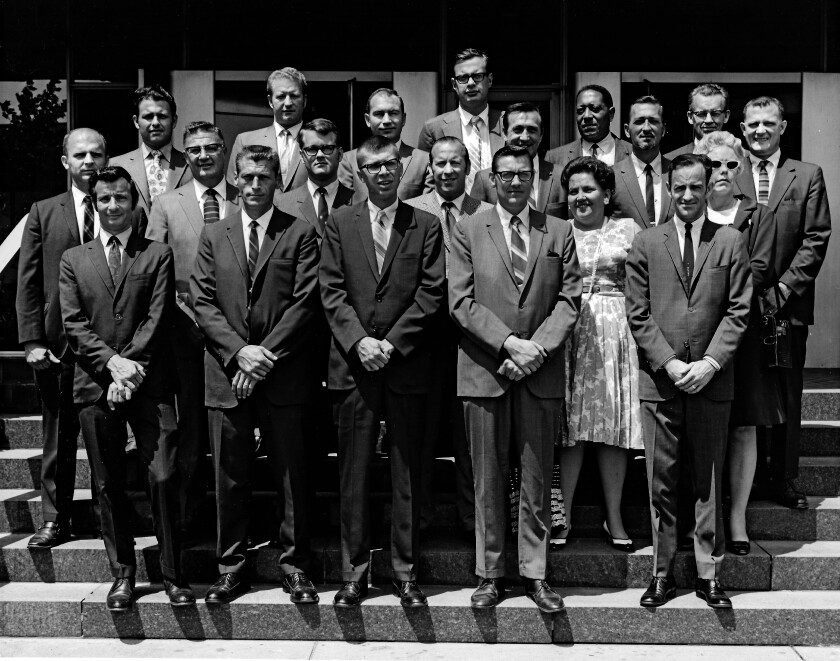My father was IBM’s first black software engineer. The racism he fought persists in the high-tech world today
Share
Explore Our Galleries
Breaking News!
Today's news and culture by Black and other reporters in the Black and mainstream media.
Ways to Support ABHM?

by Clyde W. Ford, latimes.com
John Stanley Ford, my father, was the first black software engineer in America, hired by IBM in 1946. Passed over for promotions, discriminated against in pay, with many inside IBM working to ensure his failure, he still viewed his job as an opportunity of a lifetime. He refused to give up.
Minority under representation in high tech has been present since the earliest days of the industry. In reflecting upon my father’s career for a new memoir I wrote about him, I saw important lessons about the history and nature of racism in high tech, and about the steps that corporations and individuals can take to bring about much-needed change.
IBM publicly represents itself as a company with deep roots in diversity and inclusion, but history tells a different story. The roots of racism in high tech coincide with the advent of the digital age, when in the late 1920s a fledgling company run by a cutthroat but savvy businessman named Thomas J. Watson saw an opportunity in eugenics.
Eugenics is a pseudoscience that seeks to create a “racially pure” master human race by eliminating those deemed inferior. In 1928, the Eugenics Records Office in Cold Spring Harbor, N.Y., had undertaken a project to identify mixed-race individuals on the island of Jamaica for forced sterilization and other means of population control. Realizing the massive amount of data to be collected and compiled, Watson stepped in with IBM to provide the punched-card technology crucial for the Jamaica project’s success…
In 1933, Watson offered IBM’s services, based on similar punched-card technology, to the Third Reich and automated every aspect of Hitler’s war machine — including Luftwaffe bombing runs, train schedules for carrying Jews to camps, and the measures by which Jews were apprehended and exterminated. Concentration camps had IBM rooms, where the gruesome tallies of life and death were encoded on IBM punched cards.
In recognition of IBM’s extraordinary service, Hitler created a medal festooned with swastikas that he pinned on Watson in 1937. Although Watson returned the medal when America entered the war, IBM’s support of the Nazi regime never ceased. (IBM has never acknowledged the company’s role in the Holocaust nor disputed historical accounts of it.)…
Read full article here
More Breaking News here
View more ABHM galleries here









Comments Are Welcome
Note: We moderate submissions in order to create a space for meaningful dialogue, a space where museum visitors – adults and youth –– can exchange informed, thoughtful, and relevant comments that add value to our exhibits.
Racial slurs, personal attacks, obscenity, profanity, and SHOUTING do not meet the above standard. Such comments are posted in the exhibit Hateful Speech. Commercial promotions, impersonations, and incoherent comments likewise fail to meet our goals, so will not be posted. Submissions longer than 120 words will be shortened.
See our full Comments Policy here.